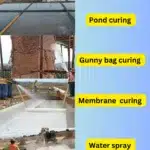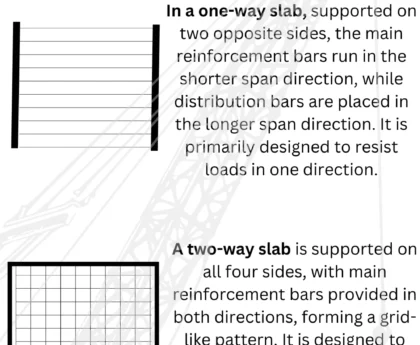Guniting in Construction: A Versatile Approach for Durable Structures
Table of Contents
ToggleIn the real world of construction, innovation often leads to the development of techniques that redefine the possibilities of building. One such method that has gained prominence in recent years is Guniting in construction. Known for its versatility and durability, Gunite has become a preferred choice for creating robust structures, particularly in the construction of swimming pools, tunnels, and slopes.
What is Guniting in construction:
Gunite is a mixture of dry cement and sand, typically in a ratio of 1:3. This mixture is pneumatically applied using a spray gun, hence the term “Gunite.” Water is introduced at the nozzle, where it combines with the dry mix and is expelled onto the surface at high velocity. This process allows for precise application, making Gunite ideal for constructing structures with intricate designs and custom shapes.
Applications of Gunite in Construction:
1. Swimming Pools:
Gunite is a popular choice for swimming pool construction. The spray-on application enables builders to create pools of various shapes and sizes, adapting to the specific requirements and preferences of clients. The durability of Gunite ensures that the pool structure can withstand the test of time, resisting the corrosive effects of water and chemicals.
2. Tunnels and Slopes:
The versatility of Gunite extends to the construction of tunnels and slopes. Its adaptability to complex terrains and ability to adhere to vertical or overhead surfaces make it an excellent choice for shoring up slopes or reinforcing tunnel structures. The spray-on application simplifies the process, allowing for efficient construction even in challenging landscapes.
What is Process of Guniting in construction
-
Surface Preparation: Before applying the Gunite mixture, the surface must be thoroughly cleaned and prepared. Any loose debris, dirt, or contaminants should be removed to ensure proper adhesion.
-
Mixing the Gunite: The Gunite mixture is typically a combination of dry cement and sand in a predetermined ratio, such as 1:3. Water is added at the nozzle of the spray gun. The dry mix and water are then combined using compressed air, creating a high-velocity stream of material.
-
Spraying the Gunite: The prepared Gunite mixture is sprayed onto the surface using a specialized spray gun. The force generated by compressed air propels the mixture onto the target area, creating a dense and cohesive layer.
-
Application Technique: Skilled technicians use the spray gun to apply the Gunite mixture evenly across the surface. The technique involves sweeping motions to ensure uniform coverage and proper compaction of the material. The application can be adjusted based on the specific design requirements of the project.
-
Layering and Building Thickness: Gunite can be applied in multiple layers to achieve the desired thickness. Each layer is allowed to partially set before the next layer is applied. This layering process builds up the material gradually, enhancing strength and durability.
-
Finishing: Once the desired thickness is achieved, the Gunite surface may be finished using trowels or other tools to create a smooth and even texture. The finishing process is crucial for achieving the desired aesthetics and surface integrity.
-
Curing: After application and finishing, the Gunite structure needs time to cure. Curing involves allowing the material to set and harden. The curing time can vary depending on factors such as temperature, humidity, and the specific mix used.
-
Quality Control and Inspection: Skilled inspectors may conduct quality control checks throughout the process to ensure that the Gunite is applied according to specifications. This involves assessing thickness, compaction, and overall structural integrity.
-
Final Inspection and Acceptance: Once the Gunite has cured and passed quality control checks, a final inspection is conducted. The structure is examined for any defects or imperfections. If the structure meets the required standards, it is accepted for use or further construction.
Advantages of Guniting in Construction:
1. Strength and Durability:
Gunite structures exhibit exceptional strength and durability. The high-velocity application process compacts the material, creating a dense and resilient surface that can withstand various environmental conditions.
2. Versatility in Design:
The adaptability of Guniting to different shapes and designs makes it a versatile choice for architects and builders. It allows for the creation of unique structures that may be challenging to achieve with traditional construction methods.
3. Speed and Efficiency:
Gunite construction is known for its efficiency. The quick application process, combined with rapid curing, accelerates the construction timeline. This time efficiency is particularly advantageous for projects with tight deadlines.
4. Reduced Formwork Requirements:
Unlike traditional concrete construction, Gunite often requires minimal formwork. The spray application adheres directly to the surface, eliminating the need for extensive formwork preparation, saving both time and resources.
Considerations for Gunite Construction:
While Gunite offers numerous advantages, it’s essential to consider certain factors before opting for this construction method:
1. Skilled Application:
Gunite application requires skilled technicians who can ensure proper mixing, application, and finishing. Engaging experienced professionals is crucial for achieving the desired results.
2. Quality Materials:
Using high-quality Gunite mixtures and materials is essential for the longevity and integrity of the structure. Cutting corners on material quality may compromise the durability of the construction.
3. Maintenance:
Regular maintenance is key to ensuring the longevity of Gunite structures. While they are durable, periodic inspections and repairs may be necessary to address any wear or damage over time.
Conclusion:
Gunite construction has undoubtedly revolutionized the way we approach certain building projects. Its adaptability, strength, and efficiency make it a compelling choice for architects, builders, and property owners alike. Whether shaping the curves of a swimming pool or reinforcing the structure of a tunnel, Gunite stands as a testament to the innovation that continues to shape the construction industry, offering a durable and versatile solution for creating lasting structures.




